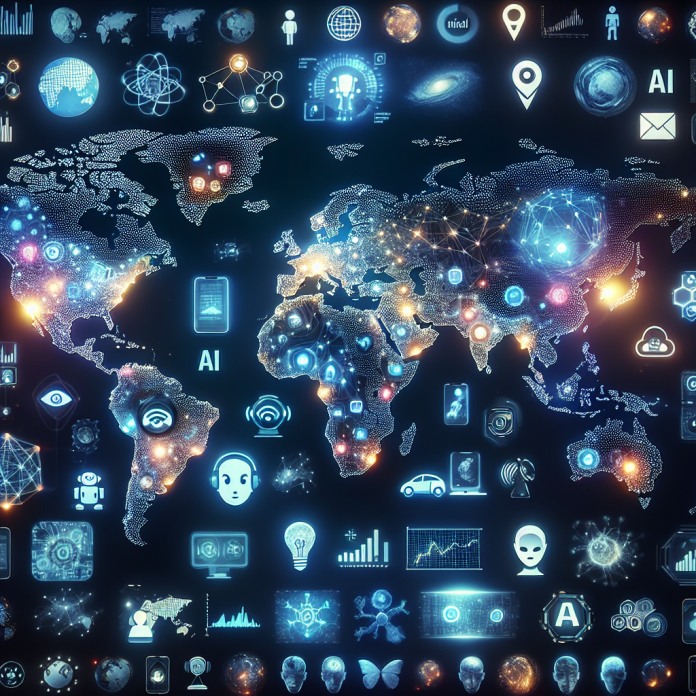Artificial Intelligence (AI) technology has revolutionized numerous industries, making tasks more efficient, improving decision-making processes, and enhancing overall productivity. From virtual assistants to self-driving cars, AI technology is becoming increasingly prevalent in our daily lives. However, there isn’t just one type of AI; rather, there are various varieties of AI technology that cater to specific uses and applications. In this article, we will explore some of the most common types of AI technology and how they are shaping the future.
#### 1. Narrow AI
Narrow AI, also known as weak AI, refers to AI systems that are designed to perform specific tasks or solve particular problems. These AI systems are limited in scope and are not capable of generalizing their knowledge across different domains. Examples of narrow AI include virtual assistants like Siri or Alexa, which can understand and respond to voice commands but cannot perform tasks outside of their programmed capabilities. Another example of narrow AI is facial recognition technology, which is used in security systems, social media platforms, and even in smartphone unlock features.
#### 2. Artificial General Intelligence
Artificial General Intelligence (AGI) represents the next level of AI technology, where machines can exhibit human-like intelligence and perform a wide range of tasks across different domains. AGI aims to mimic human cognitive abilities, such as learning, reasoning, problem-solving, and understanding natural language. While AGI is still a theoretical concept, researchers and developers are actively working towards creating machines with general intelligence capabilities. The goal of AGI is to create machines that can adapt to new situations, learn from experience, and think abstractly.
#### 3. Machine Learning
Machine Learning is a subset of AI that focuses on developing algorithms and models that enable computers to learn from data and make predictions or decisions without being explicitly programmed. Machine learning algorithms analyze large datasets to identify patterns, trends, and insights that can be used to improve decision-making processes. Examples of machine learning applications include recommendation systems (e.g., Netflix or Amazon recommendations), fraud detection in financial transactions, autonomous driving technology, and speech recognition software.
#### 4. Deep Learning
Deep Learning is a specialized form of machine learning that uses artificial neural networks to simulate the human brain’s learning process. Deep learning algorithms consist of multiple layers of interconnected neurons that process input data, extract features, and make predictions. Deep learning has been highly successful in areas such as image and speech recognition, natural language processing, and autonomous driving. One of the most famous deep learning models is the convolutional neural network (CNN), which is widely used in image recognition tasks.
#### 5. Natural Language Processing
Natural Language Processing (NLP) is a branch of AI that focuses on enabling machines to understand, interpret, and generate human language. NLP algorithms analyze text and speech data to extract meaning, sentiment, and context from language. NLP technology powers applications like chatbots, sentiment analysis tools, language translation services, and voice assistants. One example of NLP in action is Google’s language translation tool, which can translate text or speech in real-time across multiple languages.
#### 6. Computer Vision
Computer Vision is another subfield of AI that enables machines to interpret and analyze visual information from the real world. Computer vision algorithms process images and videos to identify objects, people, patterns, and other visual cues. This technology is used in autonomous vehicles, surveillance systems, medical imaging, facial recognition, and augmented reality applications. For example, facial recognition software can be used to unlock smartphones or identify individuals in security footage.
#### 7. Robotics
Robotics is a field that combines AI, machine learning, and mechanical engineering to create intelligent machines that can perform physical tasks autonomously. AI-powered robots can be found in various industries, such as manufacturing, healthcare, agriculture, and logistics. These robots can perform repetitive or dangerous tasks, assist humans in complex procedures, and enhance overall efficiency. For example, robotic surgery systems use AI algorithms to assist surgeons in performing precise and minimally invasive procedures.
#### 8. Autonomous Systems
Autonomous systems refer to machines or vehicles that can operate and make decisions without human intervention. These systems rely on AI technology to perceive their environment, plan a course of action, and execute tasks autonomously. Examples of autonomous systems include self-driving cars, drones, unmanned aerial vehicles (UAVs), and robotic vacuum cleaners. Autonomous systems are revolutionizing transportation, delivery services, surveillance, and other industries by increasing efficiency, reducing human error, and improving safety.
In conclusion, AI technology comes in various forms and shapes, each serving a specific purpose and driving innovation in different industries. From narrow AI to artificial general intelligence, from machine learning to robotics, AI technology continues to evolve and expand its capabilities. As we move towards a more AI-driven future, it’s essential to understand the different varieties of AI technology and their potential applications. Whether it’s improving healthcare, optimizing supply chains, or enhancing customer experiences, AI technology is reshaping the way we live, work, and interact with the world around us. So, next time you interact with a virtual assistant, use a recommendation system, or see a self-driving car on the road, remember that it’s all powered by the magic of artificial intelligence.

